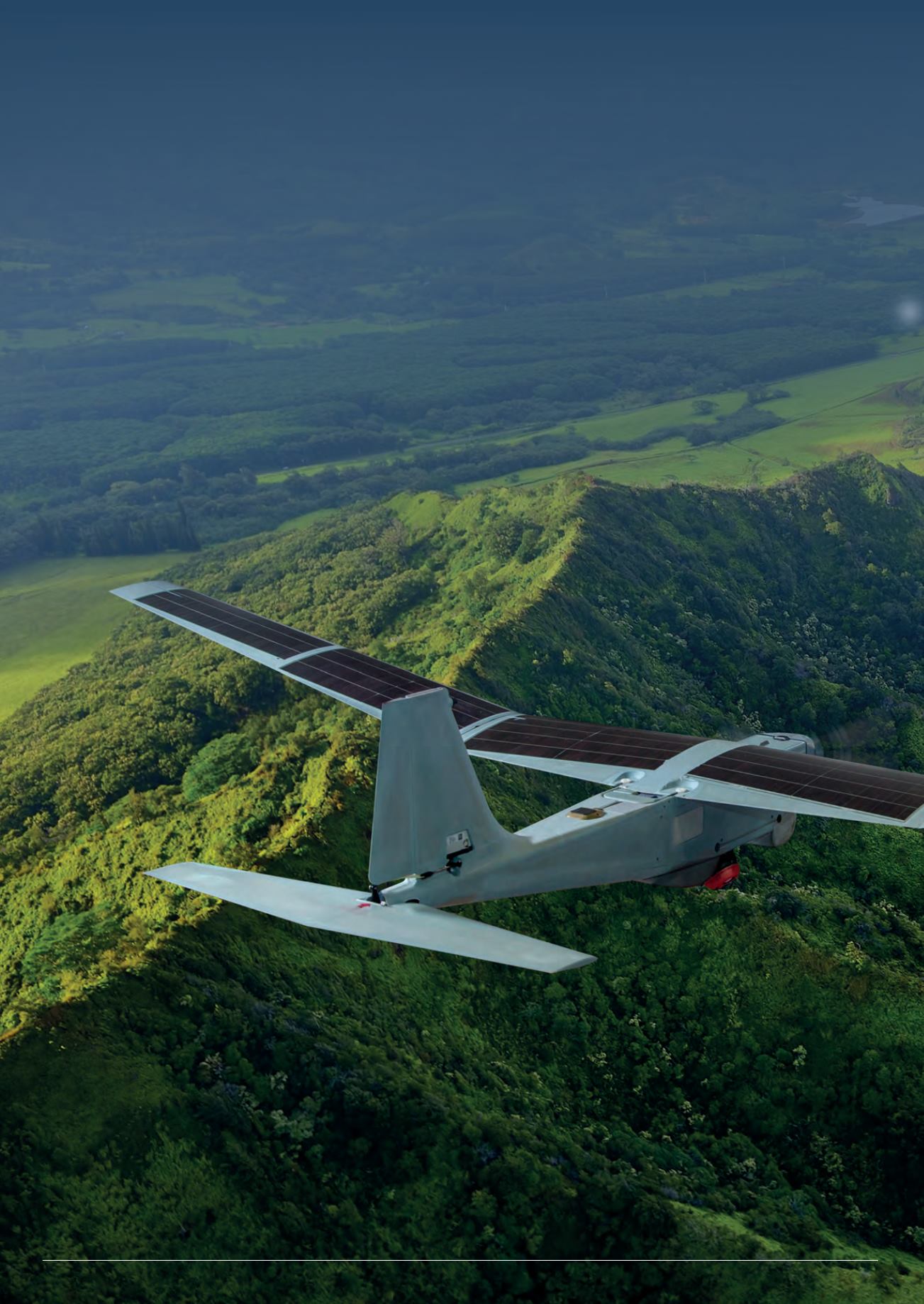

78
W
hen carefully
designed, solar
electrically powered
fixed-wing UAVs have
a far greater flight
endurance than purely electrically or
even gasoline-powered aerial vehicles,
and that begins to open doors both for
UAV projects and the solar technology
itself. Given the right environmental
conditions, a solar-powered UAV stores
excess solar energy gathered during
the day in its batteries, which can then
power the aircraft through the night and,
potentially, subsequent day-night cycles.
Long-endurance capability, especially
in the extreme cases of continuous multi-
day flight or even perpetual endurance,
is particularly interesting for applications
such as large-scale mapping,
observation or telecoms relay. It can
also be applied to search and rescue
(SAR) missions, industrial or agricultural
inspection, meteorological surveys,
border patrol and more.
Recently, interest in using large-scale
(wingspan greater than 20 m), solar-
powered high-altitude long-endurance
UAVs as atmospheric satellites, and
stationary/loitering platforms for telecoms
relay, has developed. Notable examples
here are the Aquilla and Zephyr craft, the
latter of which has already demonstrated
a continuous flight of 14 days. By
contrast, smaller scale solar-powered
UAVs are designed mostly for low-
altitude, long-endurance applications.
Although faced with more challenging
meteorological phenomena in the lower
atmosphere – clouds, rain, wind gusts or
thermals – low-altitude UAVs can deliver
higher resolution imaging thanks to
reduced cloud obstruction, are lower in
complexity and cost and are simpler to
handle. These traits are highly beneficial
for first-aid SAR scenarios as well as
other inspection tasks.
Fly longer and carry more – that’s
what every UAV customer wants. As the
uses for small, electric, commercial UAVs
expand, the demand for them to stay aloft
longer and carry heavier, more powerful
payloads increases constantly. Right
now though there are few alternatives
for extending electric UAV endurance
other than adding batteries, improving
the effciency of the electrical systems
or redesigning the UAV to be more
aerodynamic. The frst option tends to
add signifcant weight and takes up a lot
June/July 2016 |
Unmanned Systems Technology
A solar-powered version of the Puma AE (All Environment), a UAV designed
for land-based and maritime operations (Courtesy of Alta Devices)









